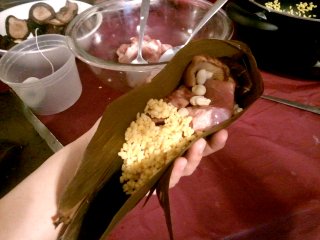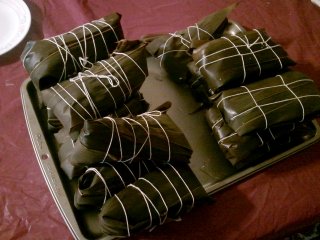Happy Chinese New Year! This Year of the Dragon is supposed to be extra-fortunate, at least from what the internet is telling me.
Bao aren’t New Year specific foods — they’re more everyday foods — but since I didn’t really cook anything specific* for New Year, here’s a bao post.
* If you’re looking for New Year specific foods, try dumplings, fish, noodles, and tangerines. Most of these foods are eaten because they’re homonyms or symbols for wealth, abundance, longevity, etc. Chinese are big on symbolism.
Bao are just buns, with or without fillings, steamed or baked. I’m usually a baked goods fan but I love the texture of steamed bun, the taste of it, and how the chewy white dough pulls apart in your hands. We made a bunch of buns with fillings: chicken and mushroom (mushroom left over from the jung extravaganza), curry beef (just ground beef cooked up with curry paste, courtesy of K) and char siu. We followed the recipe for buns and char siu from Andrea Nguyen’s Asian Dumplings book.
The procedure is actually quite simple. You make the dough, let it rise, cut it into chunks, form each chunk into a ball, flatten it into a disk, close the disk around the filling, and steam the finished bun on a square of parchment paper. (Purists get very deep into the type of flour to use, and steam their buns on cabbage leaves. But all-purpose flour and parchment paper work just fine.)
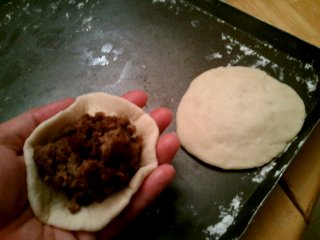
After some practice, we were able to figure out the correct amount of filling for each bun (don’t want to overfill them and have them split in the steamer).
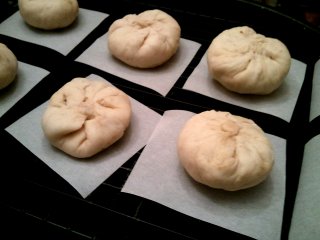
These bao are doing their final rise while waiting for their turn in the steamer.
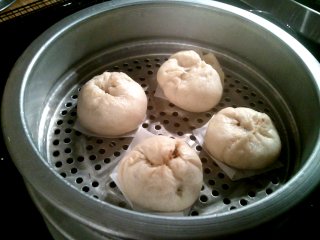
Fresh from the steamer! They freeze beautifully, too.
(The buns you can get at dim sum tend to be whiter and fluffier than the homemade ones. Word is that this is due to the quality of the flour, or maybe the dough starter, or something. It’s okay; the homemade ones are adorably rustic and plenty tasty.)

